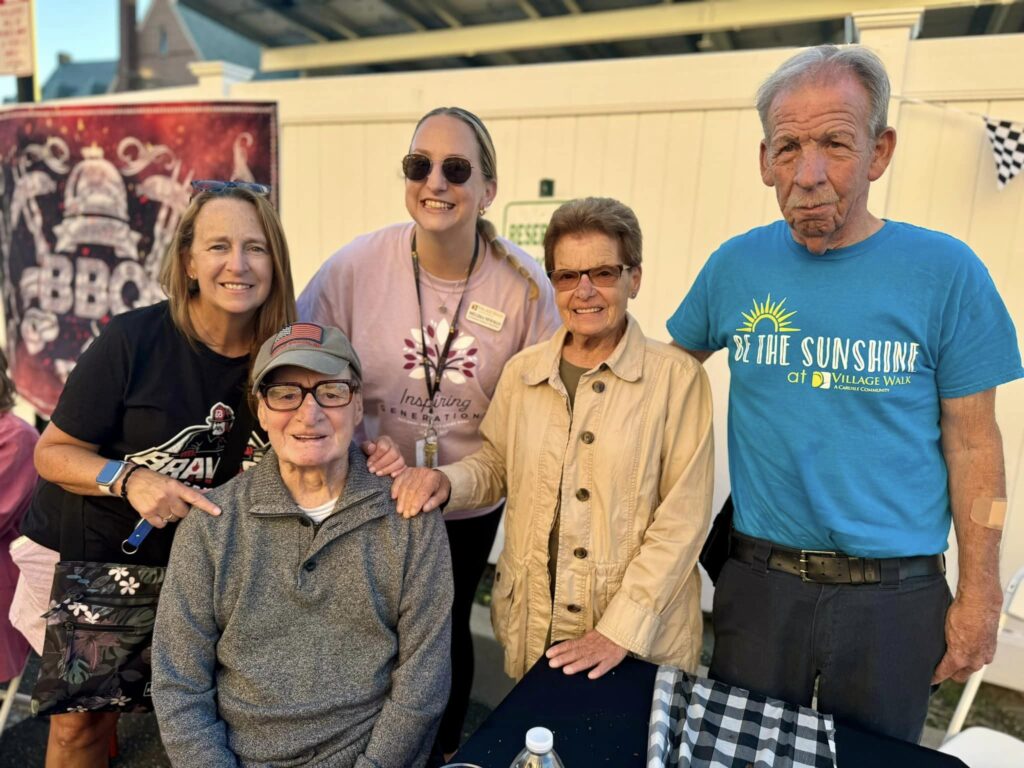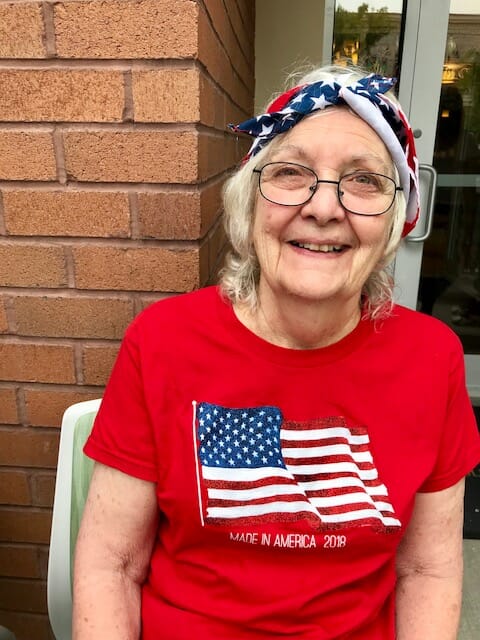When you or a loved one are dealing with a terminal illness, making the right decision for end-of-life care can be heart-wrenching and challenging. Most important, though, is knowing whether to choose inpatient hospice vs. home hospice. This choice requires extensive research and preparation.
After all, ensuring the highest quality of life is paramount.
With each choice, you want to make sure you’re making the most informed and compassionate decision for yourself. To help you take the guesswork out of the decision-making process, we created this cross-comparison article that dives deep into inpatient hospice vs. home hospice.
Our caregivers have more than 30 years of experience providing dedicated and compassionate memory care and assisted living solutions to seniors. If you’re wondering what the difference is between inpatient and home hospice, this article was made for you.
Join us as we explore the difference between inpatient and home hospice care.
Defining “hospice care”
Hospice care is a form of medical care for patients who have about six months or less to live. This type of care can be offered in a home, hospital, or treatment center-style facility.
The goal of hospice care isn’t to cure a disease. It’s to provide comfort and quality care to people in the final days of life’s journey.
In hospice care, the focus is on improving the quality of — not the quantity of — life for those in need.
Breaking down the 4 levels of hospice care
With hospice care, each level offers different value to the hospice patient. The four levels of hospice care include:
- Level 1: Routine home care
- Level 2: Inpatient care
- Level 3: Continuous home care
- Level 4: Respite care
Routine home care includes daily visits from a nurse or social worker to help support a patient with activities of daily living (such as bathing, grooming, medication management, and eating).
Inpatient care is similar to routine care, but with inpatient care, patients are tended to 24/7 by professional caregivers in hospital-like settings.
Continuous home care is similar to inpatient care, but caregivers provide care in the comfort of a person’s home.
Finally, respite care provides relief to primary caregivers by providing different levels of care to the patient either in a facility or at the patient’s home. The goal is to relieve the primary caregiver of their responsibilities for a short, designated amount of time.
The difference between inpatient hospice vs. home hospice
One of the key differences between inpatient hospice care and home hospice (also called outpatient hospice care) is that the services are provided in a licensed medical facility, such as a nursing home, board and care, or memory care facility.
At an inpatient facility, caregivers and family members can return to work or to their homes to complete daily tasks. Inpatient hospice caregivers provide therapy, nutritional counseling, pain management, incontinence support, and more.
With home hospice, caregivers stay in a patient’s home throughout the patient’s end-of-life journey. Patients receive the same above-mentioned services, but from the comfort of their homes.
Both inpatient and outpatient home hospice services share similarities in that licensed medical professionals provide care from start to end for the patient’s end-of-life journey.
Did you know?
Both inpatient and home hospice share the same goals: to provide comfort, relief, and quality support as a patient navigate the latter stages of their terminal illness.
For example, at Village Walk, our signature Meet Me Where I Am approach places patients at the center of their treatment. We provide round-the-clock, 24/7 attention to seniors with terminal illnesses as they navigate their end-of-life journey.
We do our best to offer comfort, relief, and joy in the final stages of their journey, empowering patients to keep us posted on their needs 24/7.
To get a better idea of the ways we let our patients guide our caregiving, check out our Facebook photo gallery here.
The goal of long-term hospice care
Whether navigating inpatient or home hospice care, the goal is always the comfort, dignity, support, and well-being of the person receiving care.
Hospice patients are kept as comfortable as possible. They’ll receive regular visits from nurses, aides, social workers, and community members to help ease pain, discomfort, and other uncomfortable symptoms.
At Village Walk, we also provide a suite of therapy services to make the final days of the journey as smooth and comfortable as possible.
Whether providing physical therapy for our older adults, occupational therapy, speech therapy, or counseling with our hospice social workers and psychiatric team, we’re all about nourishing emotional, physical, social, and mental well-being in our hospice community.
Table: Inpatient hospice vs. home hospice
| Inpatient Hospice | Home/Outpatient Hospice | |
| Location | Private nursing care facility, skilled nursing facility, or resident hospice facility | In a patient’s home |
| Supervision | 24/7 dedicated monitoring and emergency care | Scheduled visits & 24/7 on-call emergency care and support |
| Caregiver support | Professional medical team with trained and licensed caregivers | Family support with contracted caregivers and hospice support |
| Environment | Apartment-style neighborhood setting with medical support designed for comfort and dignity | A patient’s home |
| Cost | Flexible payment plans and affordable options; can be covered by insurance (depending on the insurance) | Often covered by insurance |
Village Walk: compassionate and quality inpatient hospice for seniors
When it comes to palliative care, you have options: inpatient or outpatient (home) hospice care.
- Inpatient hospice care is provided in a licensed medical, memory, or nursing facility.
- Outpatient hospice — or home hospice — provides medical services from the comfort of a patient’s home.
- With both inpatient and home hospice, a hospice team provides quality medical care and services to help a patient make the most of their end-of-life journey.
But only with a memory care inpatient facility can a patient rely on the 24/7 dedicated support and community of like-minded residents and caregivers for all their needs.
At Village Walk, our memory care community treats each patient like family. We treat our patients as if they were our own family — because they are. Our patients are an extension of family.
With more than 30 years of end-of-life caregiving experience, we’re all about making the final days of seniors’ journey as comfortable and dignified as possible. To learn more about what our cozy Village can do for you or a loved one, don’t hesitate to reach out to us.
We’re more than happy to explain our hospice offerings to you and your loved one.
FAQ: Inpatient hospice vs. home hospice
What makes hospice “inpatient” vs. “outpatient”?
Both inpatient and outpatient hospice’s goals are the same: to provide quality, dignified support for people who are progressing through the final stages of a terminal illness.
For those navigating their end-of-life journey at an inpatient facility, they’ll be in a skilled nursing care facility, memory care neighborhood, or hospital-like setting.
Patients experiencing outpatient hospice receive the same medical treatments, but on a contractual basis. Patients are helped outside of a patient-like facility (hence the name “outpatient”) — in the comfort of their homes.
What are the benefits of inpatient hospice vs. home hospice?
The environment plays a large role with inpatient and at-home hospice care.
In-home hospice allows a person to enjoy their final days in familiar surroundings in the comfort of their homes. With inpatient hospice, a patient receives the same quality care, but in the comfort and skilled hands of a nursing or memory care facility.
Inpatient hospice allows for more responsive treatment and the potential for wraparound support services available 24/7. Whereas with home hospice, medical professionals provide home hospice in the comfort of a patient’s home.
Which is best for my loved one?
If you’d prefer to stay at home with your family, outpatient hospice may be best for you. If you’re the type of person who wants to have top-quality, all-inclusive medical care available at a moment’s notice, hospice care in an inpatient facility may be best for you.
The good news is that the number of hospice patients served in the United States has remained stable over the last two decades (Statista, 2024), making it a smart choice for end-of-life care.
The decision is up to you. The best hospice care solution is the one that meets your and your loved one’s diverse needs.
“We feel so fortunate to have found Village Walk.”

I can’t say enough positive things about our experience so far with Sandy, she is truly an angel. During a beyond stressful time with finding our dad an assisted living facility, she somehow managed to calm our nerves by going above and beyond in a way I have never seen.
Every member of the staff she has put us in touch with got back to us in a timely fashion and reassured us even further. We truly feel we have made the right decision for our dad and feel so fortunate to have found Village Walk.
You can tell the difference when people truly care about what they do, and based on the level of professionalism and compassion of Sandy and everyone she’s put us in touch with, we have no doubt our dad will live a positive healthy lifestyle. We can’t thank you guys enough!” – Dayna A., grateful Village Walk family member








